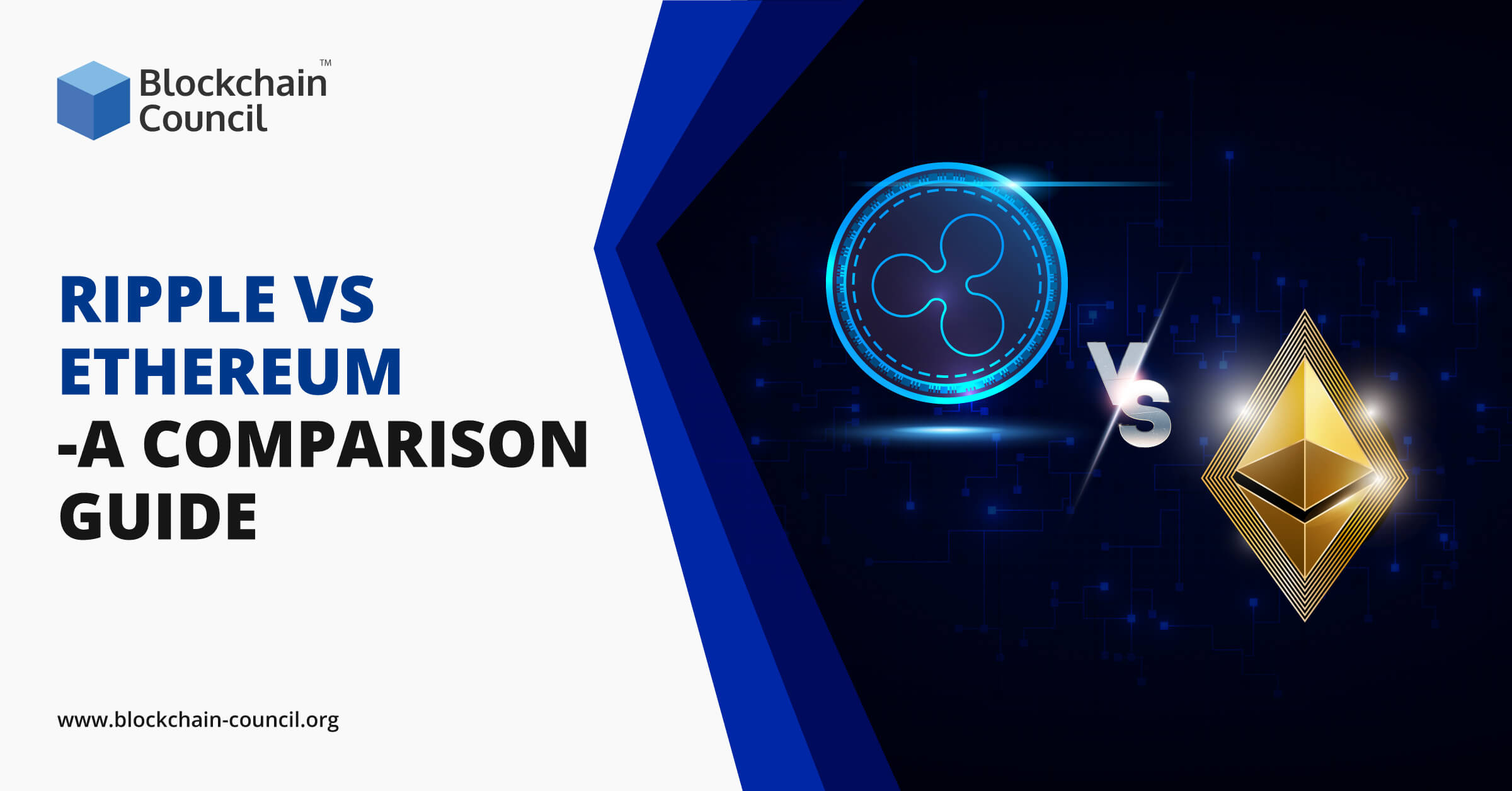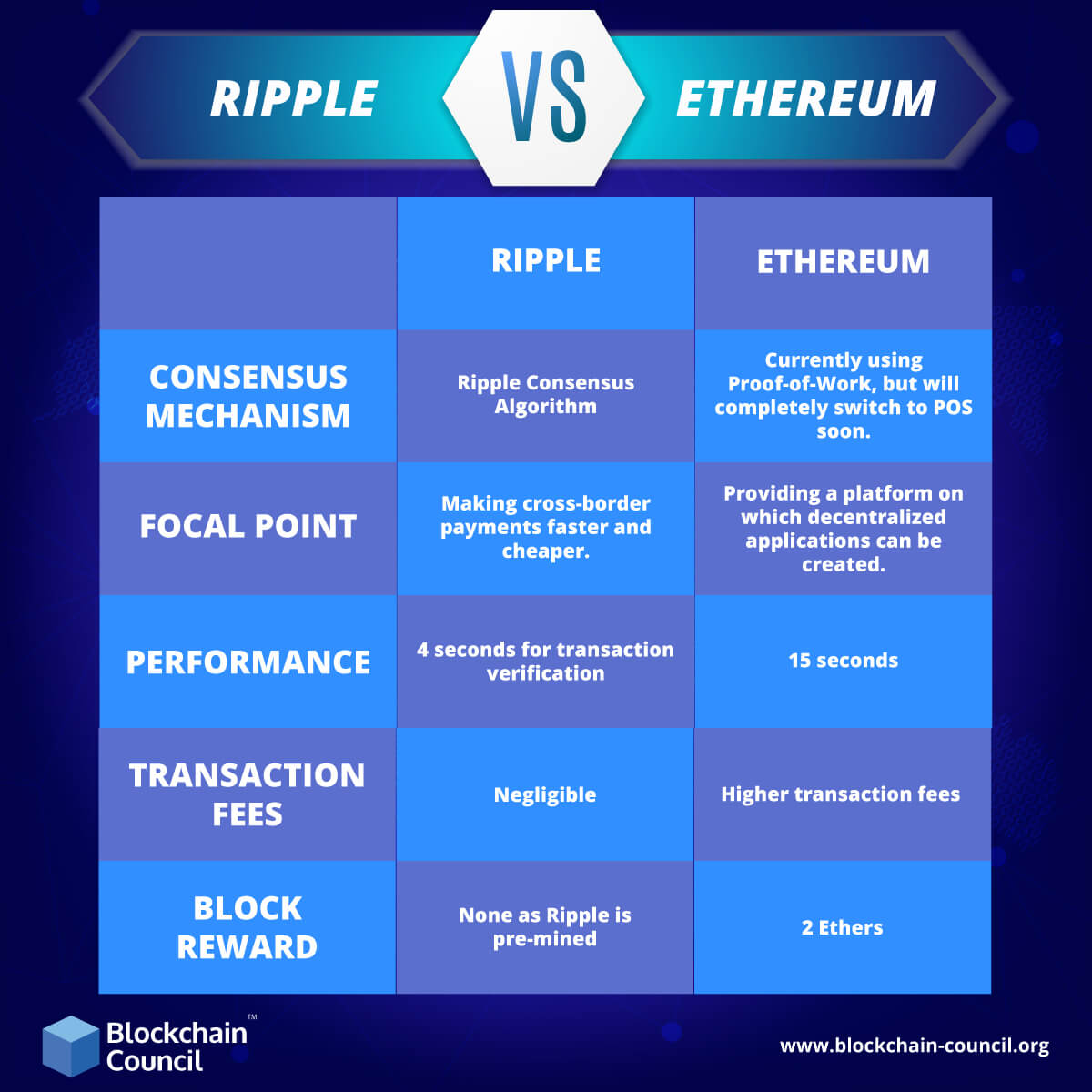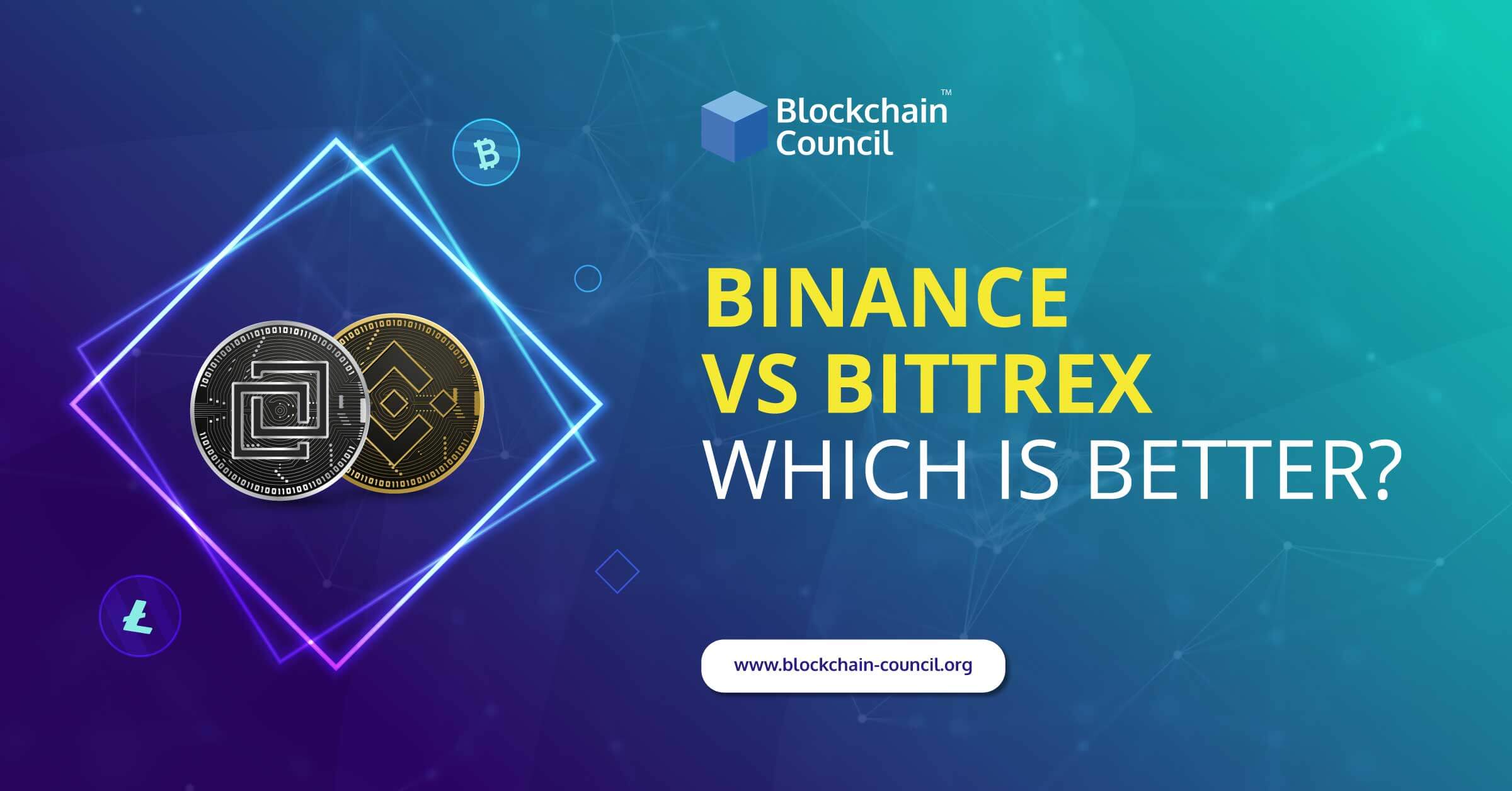
- Toshendra Kumar Sharma
- April 21, 2020
Curious to learn Ethereum and become a certified ethereum expert? Want to have in-depth knowledge of Ripple and Ethereum? You have landed on the right page. In this article, Ethereum vs. Ripple, we are going to distinguish between these two coins.
Learning Of Blog
- Introduction to Ripple and Ethereum
- Ripple vs. Ethereum-Key Differences
- Ripple & Ethereum- Advantages and Disadvantages
- Conclusion
Introduction to Ripple and Ethereum
Cryptocurrencies are an integral part of today’s modern world, and since there are multiple cryptocurrencies available in the market, people get confused about choosing the best one out of all. However, the best-known cryptocurrency is still Bitcoin, Ripple and Ethereum are increasingly gaining their popularity at an alarming rate.
Ripple is a leading blockchain network solution that offers real-time power payments to customers worldwide. Ripple coin, which trades as XRP, is the cryptocurrency used with some of the company’s payment systems, and the company describes XRP as 1,000 times faster and 1,000 times cheaper than a Bitcoin transaction.
Talking about the next known cryptocurrency, Ethereum is a global, open-source platform for decentralized applications. Just like other cryptocurrencies, this platform also uses a blockchain structure, similar to Bitcoin, but adds various functionalities such as smart contracts. Ethereum enables one to write code that controls digital value, runs exactly as programmed, and is accessible globally.
The field of blockchain is booming. If you have ever thought of taking your career in blockchain space, this is the right time to invest your time in the best blockchain certification courses.
Ripple vs. Ethereum-Key Differences
Now, as we have revised the definition of these two cryptocurrencies, let’s figure out what are the key differences between them.
Consensus Mechanism
Before understanding the consensus mechanism, let’s understand what is meant by the term “Consensus.”
Before a transaction is finalized to the blockchain, a certain part of nodes should agree that everything is valid, and when they reach an agreement, this is called consensus.
Ripple uses a mechanism called Federated Byzantine Agreement (FBA), which works differently to Proof-of-Work, that Ethereum uses as a consensus mechanism. Ripple uses “transaction validators,” and the only people that can become a transaction validator are the banks that use Ripple technology. The Ripple Consensus Algorithm is extremely fast as it achieves 1,500 transactions per second.
Ethereum works on the mechanism of Proof-of-Work, which is more lot like a puzzle. One of the main issues of Ethereum’s consensus mechanism is that it is unable to scale a large number of transactions, and the network is only able to scale a maximum of 15 transactions per second. To eradicate the existing issue, Ethereum developers are looking to move onto Proof-of-Stake (POS) mechanism using Casper Protocol, which is more resource-friendly.
Want to learn more about Ethereum? Check out Ethereum certifications and online training courses here.
Focal Point
Taking about Ripple, the main aim of Ripple is to allow real-time global payments anywhere in the world without the usual friction of exchange rates. In simple words, we can say that it aims to modernize the global payment infrastructure.
On the other hand, Ethereum aims at broadening the use of blockchain technology using smart contracts. It enables smart contracts and decentralized applications to be built and run without any downtime, fraud, or interference from a third party.
Curious to become a Certified Smart Contract Developer? You are just a click away.
Performance
Ripple possesses a semi-permissioned blockchain, as all the banks who are part of this network can use its ledger, and this is one of the major reasons why Ripple excels in its performance. When a user sends XRP coins to another person, it takes only 4 seconds for transaction verification.
When it comes to Ethereum’s performance, this cryptocurrency uses a public blockchain, which signifies anyone can become a node of the network anytime. In comparison to Ripple, Ethereum approximately takes 15 seconds, which means it is 4 times slower than Ripple.
Ripple & Ethereum- Advantages and Disadvantages
Let’s talk about Ripple first. Here goes the list of advantages first.
- Ripple is making the entire payment process, including cross-border transactions, more efficient, quick, and transparent.
- On the XRP network, payments are processed within seconds, which makes it an ideal choice for large institutions.
- Ripple bridge the gap between the digital currency world with that of the traditional financial ecosystem.
But the major issue associated with Ripple is that it is inherently private and not very decentralized as around majority of the tokens are currently owned by the Ripple Labs team.
- Ethereum is a public blockchain network, so it is transparent and secure at the same time.
- Ethereum is much focused on operating the programming code for any decentralized application, and this is the reason why it is gaining so much popularity.
- As long as the Ethereum network is in operation, Ether as a currency will always be needed. Moreover, an application of Ethereum, Smart Contracts, is continuously expanding.
However, the major drawback with Ethereum is related to ether digital currency because if the network fails, Ether will also fail.
Conclusion
To conclude, we can say that both the cryptocurrencies Ripple and Ethereum are fulfilling different niches in the cryptocurrency world, and in the years to come, they will have a very bright future in the blockchain industry. Let’s have a quick overview of the differences between the two.
So out of these two cryptocurrencies, which one is your favorite?
To get instant updates about Blockchain Technology and to learn more about online blockchain certifications and become a blockchain expert, check out Blockchain Council.






































































 Guides
Guides News
News Blockchain
Blockchain Cryptocurrency
& Digital Assets
Cryptocurrency
& Digital Assets Web3
Web3 Metaverse & NFTs
Metaverse & NFTs
